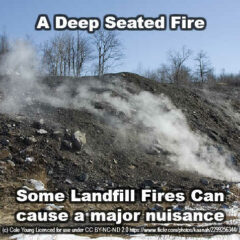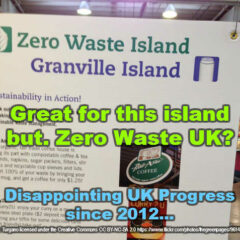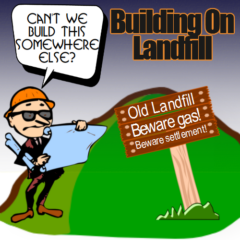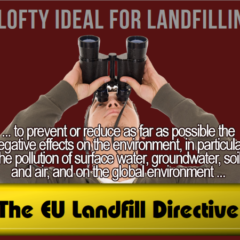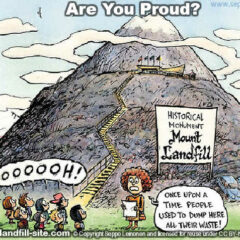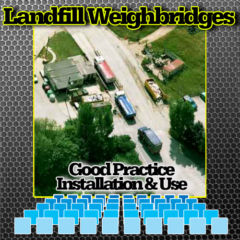Practice
Why Every Landfill Liner Leaks But Not All Leakage Matters
Landfill liner leaks are endemic. A small amount escapes from composite landfill lining systems which include both 1 metre thick a clay layer, and a clay liner loses water/ leachate according to its permeability and the head of pressure of leachate over it. That is despite applying stringent design and operational requirements for landfills, landfills continue […]
Landfill Fires Intentional and Unintended Shallow and Deep Seated
Landfill fires occur fairly commonly within landfills throughout the world, and to this day much burning of waste on landfills takes place in many developing nations. We classify landfill fires into two types; intentional and unintentional. Intentional Landfill Burning Burning of municipal waste in the open is not recommended under any circumstances, although in some […]
Zero Waste and UK Recycling Progress
Landfills vary immensely, but even the most recently developed are not considered to provide a sustainable way of getting rid of rubbish. They can cause pollution, and certainly hold the potential to do so. Very few of us want to live near to them, and the methane gas produced by them is a major contributor […]
Landfill Sites and the DSEA Regulations (DSEAR – UK)
Here is an explanation of the requirements of the DSEA Regulations and what they mean for landfill site owners and operators. All landfill owners (and by delegation their operators) fall under this regulation, and must act in order to comply with Dangerous Substances and Explosive Atmospheres Regulations (DSEAR) which have been in force since July 2006. DSEAR – […]
Construction and Demolition Waste and Recycling
In tonnage terms construction and demolition waste is the UK’s largest waste stream accounting for 90 Million tonnes of material per year in England and Wales alone. To drive the recovery of demolition material and the use of recycled materials in new structures, ICE, working with London Remade and Envirocentre has developed the Demolition Protocol […]
Building on Landfill Sites and Recommendations
We would like to emphasise that, if at all possible, building on landfill sites containing putrescible material, and which therefore are likely to be generating landfill gas should be avoided. Some old landfills will be free from landfill gas, but do take great care to obtain expert advice before you assume that any particular landfill is […]
Aerobic Landfill and Why The Subject Will Not Be Forgotten
A key topic raised in many countries, not least Japan, is why most other industrialized nations have gone so strongly for sanitary landfill design, which locks up waste and only slowly allows it to decompose with air (anaerobically) and not aerobic landfills which rot away quickly. The awful longevity of sanitary landfilling, becomes clear when […]
Sanitary Landfill
A sanitary land fill is a waste disposal location where layers of compressed garbage is covered with layers of earth. When the facility reaches the end of its life and is full, a cap is used to close the top of site. Sanitary land fills are among the most popular methods for disposing of waste, although they […]
Good Practice Guidelines for Landfill Weighing and Weighbridges
For any well run landfill site the accurate recording of waste inputs is essential for effective management of the site, and is be required by most national waste management regulations, to enable verifiable returns to be made to the waste regulatory body. Good Practice for Landfill Weighbridge Layouts On site weighbridges are the best way […]

